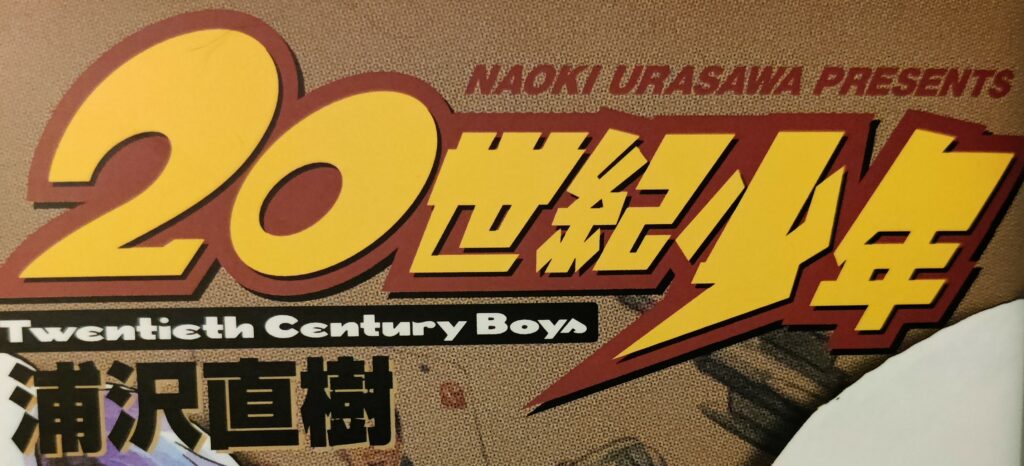
I’ve just finished reading the manga “20th Century Boys” by Naoki Urasawa. (22+2 volumes, Japanese, Published by Shougakukan) – Here’s my review.
20th Century Boys was originally published around the turn of the millenium, but the story still has a lot to say about life today. It recounts predictions of the future, conspiracies, and dictators that want to take over the world. But at its core, it’s about growing up and just how much your childhood influences the adult you become. (Minor spoilers from here on)
I started reading completely blind to the story and was quite shocked at how relevant it was to our world’s current state of affairs. With so many problems it is tempting to look to eloquent and charismatic individuals and hope that they can fix things for us, and this is exactly what the primary antagonist of the story takes advantage of. And they do this through grand conspiracies, all dreamt up from a comic that a group of friends wrote as a child. The plot revolves mostly around an attempt to take control using a manufactured virus, and a giant robot, while at the same time preparing the antidote and a plan to frame the few good guys fighting back. I could easily see such a conspiracy theory taking hold in the modern day, and I’m surprised that 20th Century Boys has not reached the public consciousness as a result.
The story also dives in to the rifts that can appear that mean people drift apart, how easy it is for people to forget whole parts of their childhood as they grow up, and why sticking together is important. I found myself really rooting for the characters by the end, and everyone earned their ending.
The genre is very much an action-thriller, but with plenty of humour dotted throughout. But when it gets tense, the tone of the writing and arts captures it well. I read the Japanese version, and this was perfect for intermediate level learning. Mostly no furigana, and a mix of casual and formal “spoken” grammar. I probably missed a lot of nuance, but it was good for exposure. Some of the technical terms and English transliterations were difficult to parse.
The art is great. Most of the pages in the editions I read were in black and white, though there were a few colour pages scattered throughout. I wish there were more of them, as it adds a pretty pop to the start of volumes and chapters. The background art is very good, especially the wide vistas of the townscapes. It really captures the different feels of past, modern, and future townscapes. The characters all have unique designs that flow well between their past and future selves, and no generic “anime look” I’ve come to dread. Some characters are particularly expressive – Yoshitsune wears glasses and has almost no eyes to speak of, and yet somehow the artist still manages to portray his facial expressions well. Panel layouts and action sequences are all good, and the story doesn’t waste any space.
The story has music… kind of. Like other manga, “Beck” by Harold Sakuishi stands out, portraying music is difficult. From the title, this book references 20th Century Boy by T-Rex, and throughout other tracks and artists. This is a nice addition, and you can listen along separately as you read, it adds to the atmosphere at times. But at other times, including Kenji’s tracks, it’s difficult to really “hear” what’s written on a page when it is a made up song, so it falls kind of flat.
I felt the story got a bit complicated about 2 thirds of the way through, and the constant teasing of who the “friend” masterminding everything was got a bit grating. There was a lot of jumping back and forward between the character’s youth and the present day, and while that technique can be tricky to pull off well, this story just about managed it. Most of the plot points were resolved by the end, though I’m still unclear on some of them – what exactly was going on with the spoon bending ability?
Despite some flaws, overall it was an enjoyable read, and I would recommend it to anyone looking for a complete manga with a serious story.